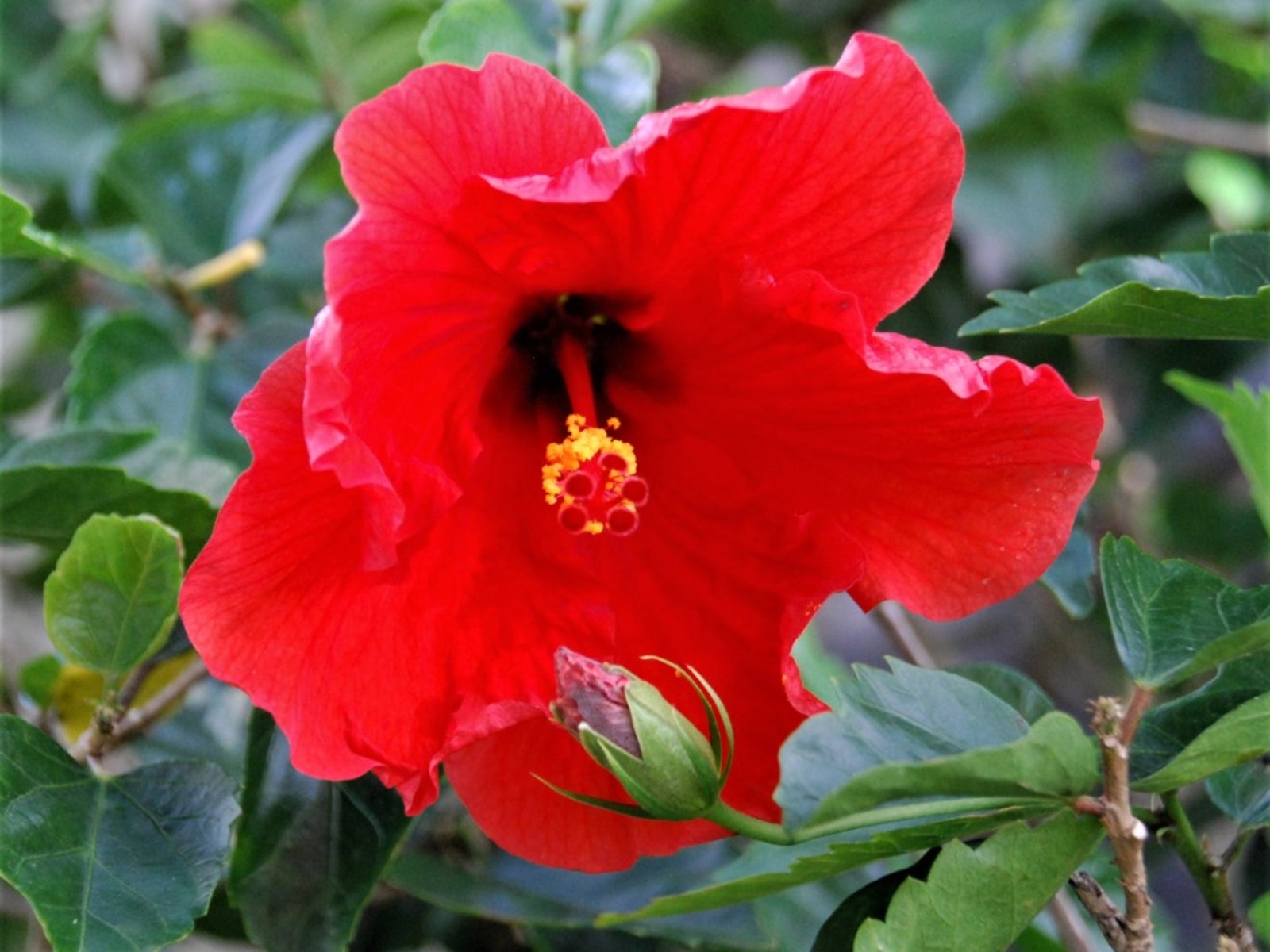Hibiscus For Zone 5 Gardens: Tips On Zone 5 Hibiscus Care


If you’ve ever visited Hawaii, you probably couldn’t help but notice its beautiful and exotic tropical flowers like orchids, macaw flower, hibiscus, and bird of paradise. Even if you just walk down the suntan lotion aisle of your local supermarket, no doubt you will see hibiscus and other tropical flowers decorating bottles of Hawaiian Tropic or other lotions. These are not just random images; commercial artists are trained to select colors and images that invoke specific feelings in consumers. A shiny gold bottle with the image of a large, bright red hibiscus flower on it makes the consumer think of the shining sun and a tropical paradise. Hibiscus flowers are often used as a symbol of an exotic, tropical place even though plenty of hibiscus varieties are hardy in northern climates. No one ever looks at a suntan bottle with a large image of a hibiscus flower and thinks of Iowa, Illinois, or the like. However, even in in these climates, with proper selection of zone 5 hibiscus plants, you can have your own tropical paradise right in your northern backyard.
Hibiscus for Zone 5 Gardens
Hibiscus is a large group of flowering plants in the mallow family. They grow natively all over the world, in tropical areas, sub tropics, and even in northern climates. Though closely related to rose of Sharon shrubs, hardy hibiscus is a perennial in northern climates. They are often selected by gardeners or landscapers because of their large tropical-looking flowers that bloom midsummer to fall. These hardy hibiscus varieties come in a variety of flower colors like red, pink, lavender, purple, white, yellow, and even blue. Another plus to these beautiful flowers is that they attract butterflies and hummingbirds to the garden while being rather unappealing to rabbits and deer. Although many garden centers sell the tropical varieties as annuals intended for containers, there are also many perennial varieties of hardy zone 5 hibiscus plants. Below is a list of hibiscus varieties for zone 5:
- Kopper King, hardy to zones 4-10
- Plum Crazy, hardy to zones 4-10
- Fireball, hardy to zones 5-9
- Robert Fleming, hardy to zones 4-10
- Lord Baltimore, hardy to zones 4-10
- Lady Baltimore, hardy to zones 4-10
- Diana, hardy to zones 5-8
- Heartthrob, hardy to zones 4-9
- Bluebird, hardy to zones 4-9
- Midnight Marvel, hardy to zones 4-9
- Starry Starry Night, hardy to zones 5-9
- Cherry Cheesecake, hardy to zones 4-9
- Honeymoon Red, hardy to zones 5-9
- Honeymoon Light Rose, hardy to zones 5-9
- Lavender Chiffon, hardy to zones 5-9
- Summerific Berry Awesome, hardy to zones 4-9
- Vintage Wine, hardy to zones 4-9
- Mars Madness, hardy to zones 4-9
- Cranberry Crush, hardy to zones 4-9
- Luna Pink Swirl, hardy to zones 5-9
- Plum Fantasy, hardy to zones 4-9
- Ballet Slippers, hardy to zones 5-9
- Summer Storm, hardy to zones 4-9
- Old Yella, hardy to zones 4-9
- Fantasia, hardy to zones 4-9
- Giant Lazerus, hardy to zones 5-9
Zone 5 Hibiscus Care
Growing hardy hibiscus plants in zone 5 is no different than growing any other perennial. Closely related to hollyhock, hardy hibiscus can get pretty large, so select a spot that can accommodate its 6 foot (2 m.) height and 4 to 6 foot (1-2 m.) width. They work great for back borders or along a fence. Hibiscus plants tend to require a lot of water and grow best in full sun to light shade. Throughout the blooming period, deadhead spent flowers to encourage new blooms. In fall, cut the whole plant back to about 4 to 6 inches (10-15 cm.) above the soil line to promote new, fuller growth in spring. Hibiscus plants are usually late in showing any signs of life in the spring. Don’t panic, just be patient.
Gardening tips, videos, info and more delivered right to your inbox!
Sign up for the Gardening Know How newsletter today and receive a free copy of our e-book "How to Grow Delicious Tomatoes".